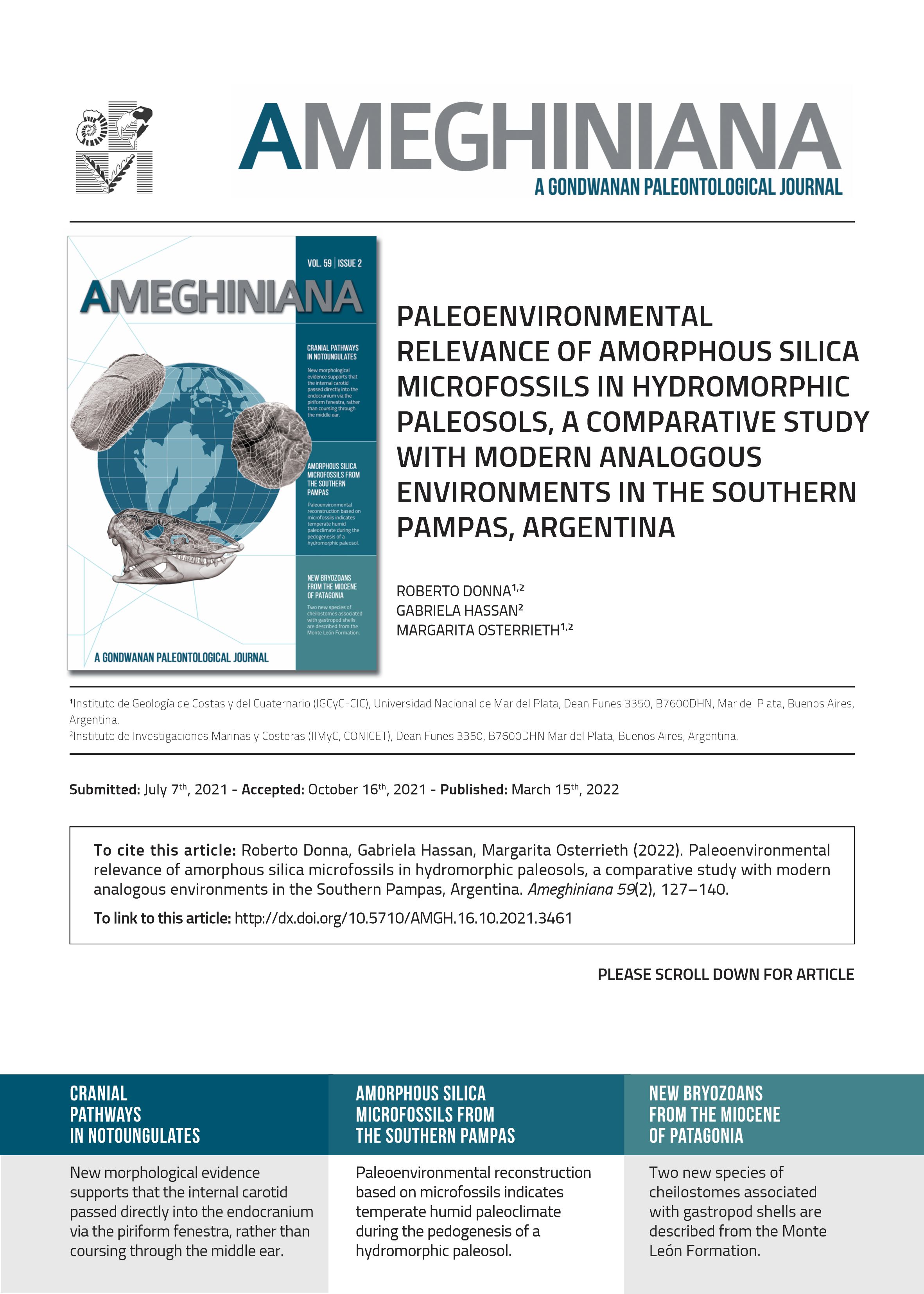PALEOENVIRONMENTAL RELEVANCE OF AMORPHOUS SILICA MICROFOSSILS IN HYDROMORPHIC PALEOSOLS, A COMPARATIVE STUDY WITH MODERN ANALOGOUS ENVIRONMENTS IN THE SOUTHERN PAMPAS, ARGENTINA
DOI:
https://doi.org/10.5710/AMGH.16.10.2021.3461Keywords:
Hydromorphic paleosol, Silicophytoliths, Diatoms, Chrysophytes, Spicules, Southern PampasAbstract
In this contribution we describe assemblages of amorphous silica microfossils in a hydromorphic paleosol for the first time in the Southern Pampas. And through a comparative analysis with modern shallow lakes, we discuss their relevance and biases as paleoenvironmental indicators. The hydromorphic paleosol analyzed is exposed in the Barranca de Los Lobos section, located in the Atlantic coast of the Buenos Aires province (Argentina), and was placed around the Pliocene/Pleistocene boundary by magnetostratigraphy studies. Of all amorphous silica microfossils, silicophytoliths were the only well represented in both the hydromorphic paleosol and modern environments, which allowed a comparative analysis of assemblages based in the relative abundance of morphotypes and a paleoclimatic reconstruction. Other amorphous silica microfossils were found in low abundances and poor preservation states in the hydromorphic paleosol, which did not allow quantitative analyses. Two types of chrysophycean cysts were identified, being Clericia spinigera also present in the modern environments studied. Diatom fragments found in the hydromorphic paleosol were unidentifiable. Whereas in the modern shallow lakes, 35 species were recognized, which allowed the delimitation of diatom zones and the differentiation of deepening and drying periods in recent history. Spicules of freshwater sponges were found fragmented as a trace component in both the paleosol and modern shallow lakes, suggesting an allochthonous origin. Our results provide new insights on the paleoenvironmental evolution of the region, and highlight the potential use of amorphous silica microfossils as bioindicators in paleosols of the Late Cenozoic pedosedimentary sequences of the Southern Pampas.

Additional Files
Published
Issue
Section
License
Authors publishing in Ameghiniana have the option of making their article freely available online. Authors opting for the Open Access must pay a fee of $300 (US dollars) to cover article-processing costs and to ensure the article is made open access. Please contact the Production Team after the acceptance of your manuscript if you are interested in making your article Open Access. This option implies by default a license Creative Commons Attribution Non-Commercial-NoDerivs License (CC BY NC ND). If your funding institution requires a different licensing option please communicate this to the Production Team after the acceptance of your manusctipt.










